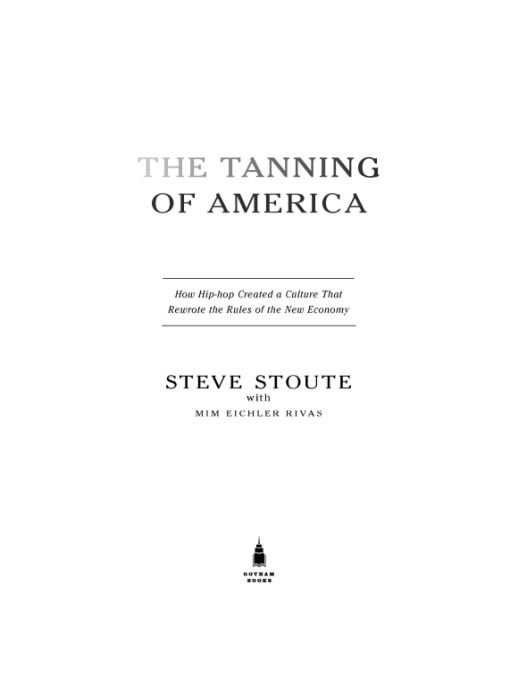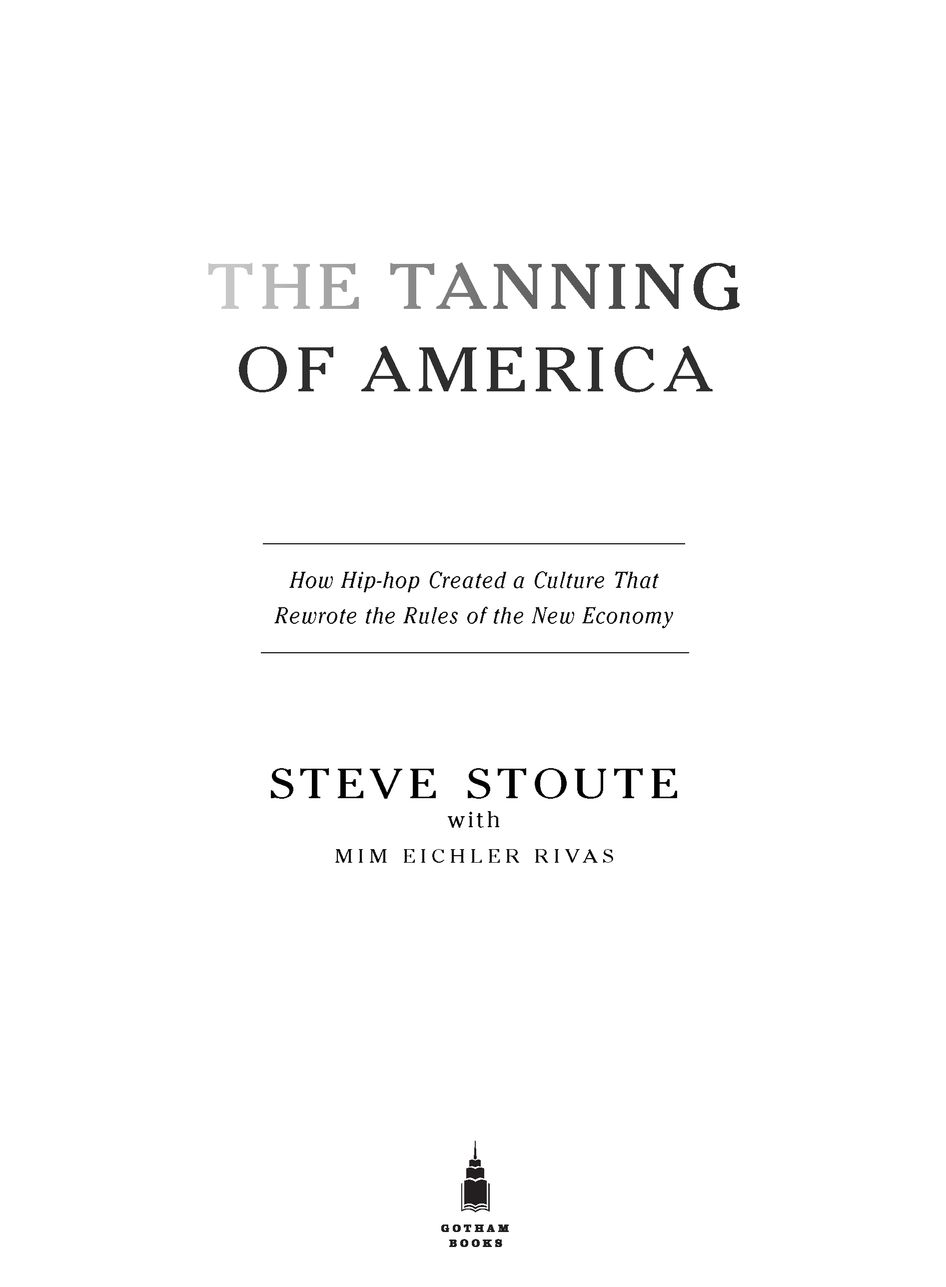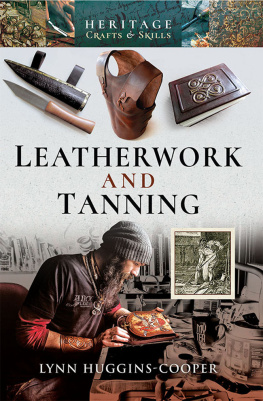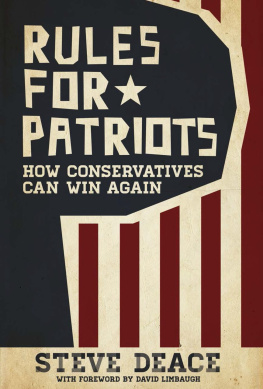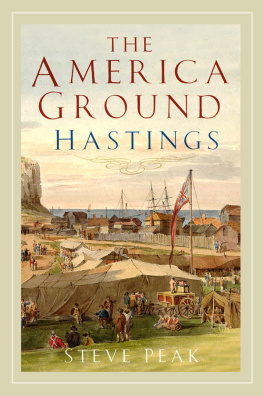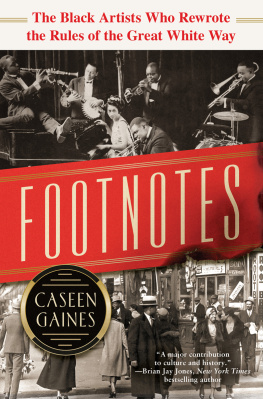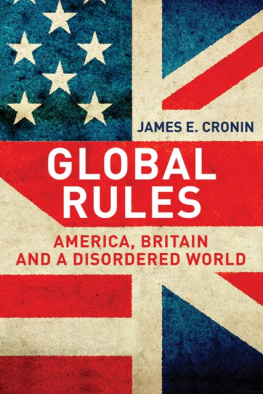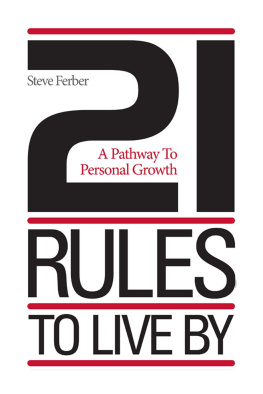Table of Contents
TO MY DAUGHTER SOPHIA...
May you grow up in a world without divisions that are based on color or ethnicity, a place where aspirations become shared realities.
AUTHORS NOTE: ON DEFINING URBAN
adj \r-bn\
FromWebsters- of, relating to, characteristic of, or constituting a city
- Latin urbanus, from urbs city. First known use: 1619
Notes forThe Tanning of America
Prior to the 2000 census, the term urban referred to all territory, population, and housing units located in places with a population of 2,500 or more. After the 2000 census, the definition changed to incorporate a population density of at least 1,000 people per square mile.
However, in marketing speak and with everyday dialogue, the word urban has come to refer to inner city youths and is loosely associated with minorities.
As we use urban in this book, our aim is to speak to density and not to make reference to race or creed.
INTRODUCTION
Graydon Carter
It could be fair to say that Steve Stoute is one of the more noticeable figures in the recent flurry of Madison Avenue ad talismans. Thats partly because he is African-American. But its also because he still has the unfazed complexion of a babya baby with a mustache, mind you. He doesnt look much older than he did when I first met him almost twenty years ago. Back then, Peter Arnell, who was on his way to becoming a certifiable ad legend, used to frequent the same Italian restaurant in Greenwich Village that I did. Peter was a big fellow in those days and he would often share a table with a lot of main courses and a good-looking young kid named Steve. Steve had the sort of winning way that indicated he might be going places, and I just assumed he was Peters assistant. A few years later, I was surprised to discover that not only was Steve not Peters assistant, he was his partner. Not only that: They had just sold their marketing company for a good many millions of dollars.
In a way, if you were there, you could see it all happening in front of you. Steve was like a sponge. He wanted to know about everything and everyone. He trimmed down, got a great tailor, and even figured out how to show up for lunch on time. Beyond that, he had the passion, the curiosity, and a willingness to try anything that all successful people have. And he had enough moxie to fuel the long journey from Queens across the East River to Manhattan. For the son of hardworking immigrants from Trinidad, that is about as tough and as far a distance as youre ever going to travel in this country.
Steve founded Translation Consulting & Brand Imaging in 2004. Im never quite sure what branding people do exactly, but I know that Steve is broadly admired for his lucrative pairings of the well known and the well made. Hes fashioned himself into the host of a kind of commercial cocktail party where some of the worlds biggest stars and some of the worlds biggest companies couple up at just the right moment. And in advertising, as with show business or the hospitality industry, timing is everything. Steve is the architect behind Gwen Stefani and Hewlett-Packard, Justin Timberlake and McDonalds, Jay-Z and Reebok, Lady Gaga and MAC Cosmetics. The list goes on.
The Tanning of America chronicles the economics, politics, and poetry of hip-hop culture and how it propelled the rise of brands as diverse as Tommy Hilfiger, Cristal champagne, Versace, Timberland, Nordica, and Woolrich. Insofar as I have come to understand him over the yearsboth as a friend and as someone I just generally admireSteves success comes from being a master observer. He has the great admans ability to pick up on imperceptible ripples in the cultureripples that will in time become waves. And then he just gets on top of them and rides the big ones to glory.
an act, process, or instance of translating: as (a) a rendering from one language into another; also : the product of such a rendering (b): a change to a different substance, form, or appearance
OVERTURE: TANNING IN TRANSLTION
Our story begins on a sweltering summer night in New York CityFriday, July 19, 1986, to be exactduring a sold-out show at the legendary Madison Square Garden, which some twenty thousand exuberant fans, mostly in their teens and early twenties, mainly African-American and Hispanic, had traveled from near and far to attend. For most observers of popular culture at the time, little significance would be attributed to the events of the evening, despite its being one of the first rap concerts to command the Garden. But for those fortunate enough to have been thereand those like me, then a sixteen-year-old growing up in Queens, already obsessed with hip-hop yet sadly unable to score a ticketthis night was about to take on biblical relevance in our generations cultural DNA.
Across the five boroughs and beyond, the streets had been humming with anticipation for weeks. The Gardens promoters, however, along with the rest of the mainstream media, were apparently so disinterested in whatever this ghetto-born musical oddity was, the only advance published mention of the show appeared the day before in
The New York Times. In a brief attempt to characterize the concerts lineup of Run-DMC, LL Cool J, and newcomer Whodini, the
Times asserted:
Rap musicsyncopated rhymes atop electronic funkhas become a long-running rock style, in no small part due to the popularity of Joey Simmons and Darryl McDaniels, better known as Run-D.M.C. Shouting in unison or filling in each others lines over the funk drumbeats and hard-rock guitar chords supplied by the disk jockey Jam-Master Jay, Run-D.M.C. boast about their exploits and put down others follies. Some of their rhymes were once supplied by James Todd Smith, alias L. L. Cool J. (which stands for Ladies Love Cool James), now becoming a rap star in his own righta cocky word-slinger who is fond of polysyllables and unexpected pauses.... While recent rap concerts... have been marred by incidents, the security force inside and outside the arena will be, a Garden spokesman said, beefed up a lot for the concert. Tomorrow at 8 P.M.; tickets are $17.50.
Even if the writing seems quaint by most standards, the Times got one thing right: The threesomeJoseph Run Simmons, Darryl DMC McDaniels, and Jason Jam Master Jay Mizellwere already considered titans of the small but expanding kingdom of rap. After first appearing on the scene in the spring of 1983, the trio from Hollis, Queensnot far from my neighborhood of Queens Villagehad been blazing trails across urban America, gathering momentum. Three years later, Run-DMC were on their way to becoming the first true superstars of hip-hop. In terms of record sales, they were riding a meaningful wave with Raising Hell, their aptly named third album, released earlier that year. Dropping hit singles one after the other, the album would go on to be certified multiplatinum and, in time, would be critically hailed as a genre-defining masterpiece.
But the tale Im here to tell is less about the music itself and more about the atomic reaction it created, a catalytic force majeure that went beyond musical boundaries and into the psyche of young Americablurring cultural and demographic lines so permanently that it laid the foundation for a transformation I have dubbed tanning. Hip-hop had come about in a time, in places, and through multiple, innovative means that enabled it to level the playing field like no other movement of pop culture, allowing for a cultural exchange between all comers, groups of kids who were black, white, Hispanic, Asian, you name it. Somehow this homegrown music resonated across racial and socioeconomic lines and provided a cultural connection based on common experiences and values, and in turn it revealed a generationally shared mental complexion.

